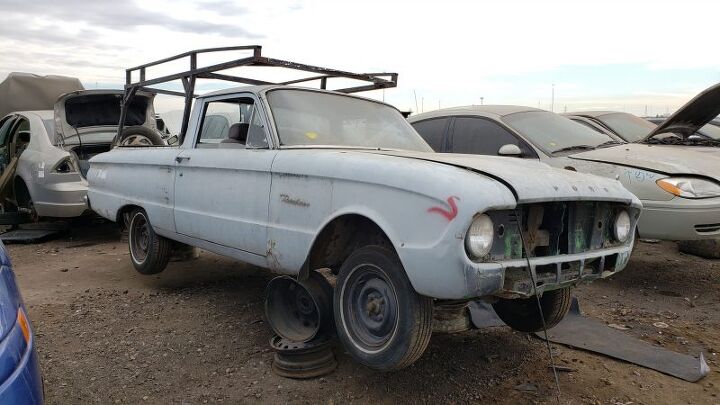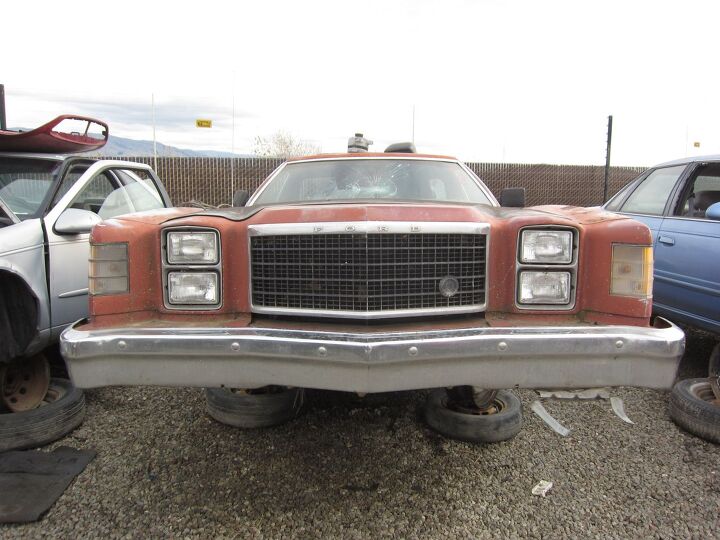#ranchero
Junkyard Find: 1961 Ford Falcon Ranchero
Junkyard Find: 1977 Ford Ranchero GT Brougham
Since we haven’t seen a Ford product in this series since this Fox Granada four months ago, and we just saw three GM cars in succession, I decided this week would be the turn of a once-plush Ranchero GT Brougham, now fallen on hard times in a San Jose self-service wrecking yard.
Junkyard Find: 1979 Ford Ranchero
Ah, the Malaise Era! Engines making one horsepower per three cubic inches. Broughams, Landaus, and molded-in fake stitching on petroleum-distillate Simu-Vinyl™ upholstery. And, of course, a pseudo-pickup based on the Ford Thunderbird platform. 1977-79 Rancheros still show up in California wrecking yards now and then, and that’s where I saw this green-on-green-on-green-on-some-more-green ’79 last fall.
Junkyard Find: 1978 Ford Ranchero
Ah, the Malaise Era. Some cars are just poster children for the 1973-1983 period of diminished expectations, sclerotic automaker bureaucracy, tape stripes, and the ascendancy of focus-group marketers. Take, for example, the 1977-1979 Ranchero, during which Ford decided to use the massive Thunderbird platform as the basis for their popular cartruck. It should have been a commercial disaster, but in fact it sold quite well.
Tastefully Modified Texas Ranchero Packs Cadillac Power, Towing Package
When you’re looking at a basket-case Ford Ranchero, a Cadillac 500-cubic-inch V8 plus TH400 transmission, an ancient Mercedes-Benz hood, and a yard full of random scrap metal, do you feel optimistic? The builder of this fine machine certainly did!
Curbside Classic CA Vacation Edition: Triple '67 El Caminos and Reclusive '56 Nomad
I have a growing cache of Eugene El Caminos, and was going to break them out soon enough. But taking a stroll around San Mateo, I ran into three ’67s within a few blocks of each other, so let’s caminar down that long and fertile el camino of Chevy’s popular ute pickup, with this particularly popular year. And what’s that lurking in the garage? Let’s take a closer look:





















Recent Comments